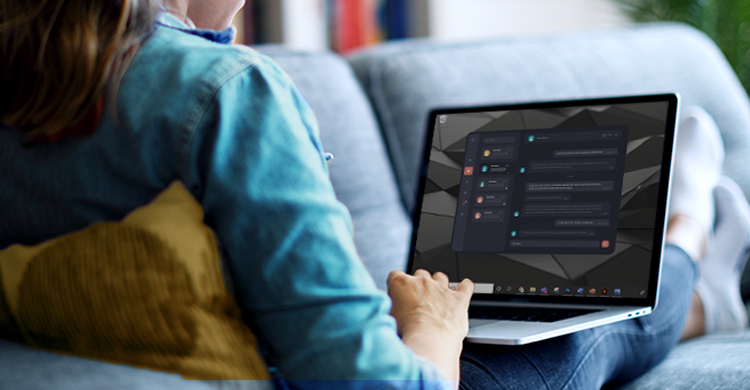Marketing KPIs & Benchmarks for 2026
We work with B2B leaders every day who have extensive marketing data, but don't know what to make of it. It's hard to know you're on track to meet...
3 min read
Mary Crowley Thu, Jul 21, 2022

There is no new normal. Every company we work with is experimenting with work modes, fully back in office, remote, and hybrid work environments. A recent Accenture survey revealed that 83% of workers say a hybrid model would be optimal for them. Given the competition for top talent, high-growth organizations are enabling productivity anywhere workforce models.
With the shift in workplace preferences, internal communication styles must evolve. In addition to the hybrid and remote environment, internal communication is challenging in today’s world because of:
The net result? Employees experience burnout and change fatigue as they grapple with less stability in changing environments, a new mix of colleagues and vendors, and shifting roles. Now more than ever, people need thoughtful, purposeful, clear messages. Here are ways you can excel at internal communications no matter in today's business environment.
Start with the why. Why are you communicating, and is it valuable information? Your team is busy and adding meetings cuts into productivity. If the agenda doesn’t apply to them and they don’t know the purpose, then the meeting probably shouldn’t involve them. Good communication ties in with the work and goals of each person. When scheduling meetings, provide an agenda and stick to it. What you share and receive should be actionable with clear and specific takeaways that are personalized by the role.
Establish the rhythm of communication. Do you always send out Monday morning weekly agenda items? Then stick with that. Employees know when they’ll hear certain types of information. Keeping a consistent communication plan helps put employees at ease and altogether organized.
Utilize your omnichannel for internal communication. The whole team should know which venue to share information. Informal and formal information should have two different communication streams. Maybe it’s casual, quick responses through a messaging channel and larger, newsworthy information in an email. In all instances, your internal communications should be accessible and inclusive regardless of learning styles, abilities, and tech access levels. Avoid creating an environment where people who are not physically in the office are left out of information sharing or decision-making. Take advantage of your current tech stack to capitalize on good internal communication in a hybrid environment.
Respect in the workplace is crucial, especially in internal communication. In a hybrid work environment, digital communication is integral. But with that comes digital misinterpretations. Be conscious of your tone. Face-to-face, even by video conference or recorded video, may be the right call for difficult communications.
Make sure your communication is empathetic and addresses their concerns and not yours. As a best practice reminder, emails should include more “you” and less “I.”
Company communication should be within working hours no matter the channel. Working in a remote or hybrid setting has unique challenges, making it harder to disconnect from work because it’s always at your fingertips. Set your hours of communication and stick to them. Not only is it a good habit, but employees will appreciate it and feel less burnout by not having to be “on-call” at all times. Pre-scheduling emails can increase your efficiency while respecting your employees' local time zones.
One of the top reasons employees stay in a job is because of their close friends at work. These relationships can take a hit in a hybrid or remote environment with less opportunity for casual chat. Continue to foster fun activities employees can do together to keep a sociable and personal side to work, which could include:
Company activities can help build lost connections and foster psychological well-being among employees.
We’ve talked a lot about employee recognition recently, especially as burnout and the great resignation continues. There are so many easy ways to engage, reward, and recognize employees to keep morale and communication high. Pick a day of the week to spread kudos among the team, recognizing them for their hard work. Gamify what you can: sales and marketing activities, learning and training, and product development. Use internal communications to reward employees and recognize hard work that may go unseen in a hybrid or remote environment.
Looking for more information on internal communications in the workplace? Launch Team helps B2B companies design and execute communication strategies to improve internal and external communications. Let’s talk through your needs–request a free consultation!

We work with B2B leaders every day who have extensive marketing data, but don't know what to make of it. It's hard to know you're on track to meet...

Get a Competitive Edge with Comprehensive AI & GEO Insights If you are beginning to notice an erosion in organic traffic and leads, it may be time to...

Updated on 6/10/24 The 80/20 rule or Pareto principle, is a long-standing business strategy that a lot of companies are applying right now to...